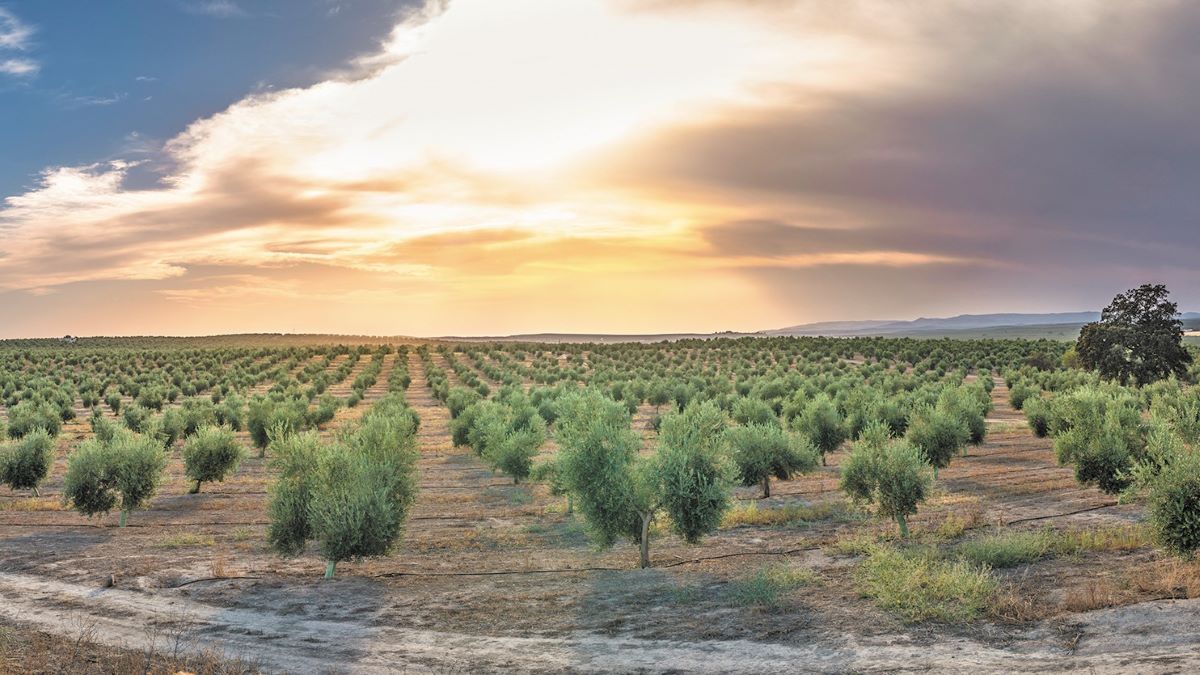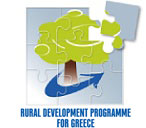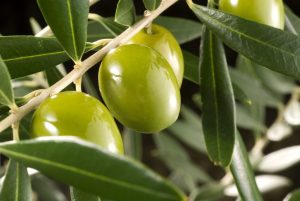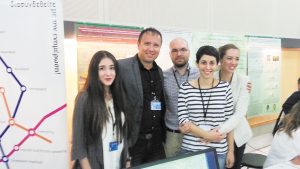MUCH-BETTER OIL: A Project Nearing Completion That Transformed the Fight Against Olive Anthracnose

The MUCH-BETTER OIL project, funded under Submeasure 16.1-16.2 of Measure 16 ‘Cooperation’, is nearing successful completion. It promotes scientific solutions aimed at protecting olive trees from the dangerous disease anthracnose (Gloeosporium). Implemented as part of Greece’s 2014–2022 Rural Development Program, the pilot project focuses on both the qualitative and quantitative improvement of olive oil production in the Regional Unit of Messinia by studying and developing targeted strategies to combat this damaging fungal disease.
Since 2016, the Laboratory of Agricultural Pharmacology at the Agricultural University of Athens (AUA) has been researching the disease in the Messinia region. Scientists observed that both table and oil olive varieties were periodically but extensively affected by the Gloeosporium fungus.
Specifically, the production of the two major local cooperatives – “Elaionas” in Gargalianoi and “Nileas” in Chora – was sometimes reduced by 50% to 60% due to the disease. According to the MUCH-BETTER OIL operational team, in certain years when conditions were favorable for the fungus, national-level losses were estimated to reach up to €100 million. Even though plant protection programs were applied, they often failed to deliver satisfactory results, and farmers ended up investing heavily in an attempt to save their crops – usually with little success.

Solving the Puzzle of Resistance
“In the bad years, when outbreaks were severe, many sprayings were carried out, resulting in high costs and major losses,” says Sotiris Giannakaris, a PhD candidate at the Agricultural Pharmacology Lab at AUA. “Due to the variability of the fungus, the chemicals used were often ineffective.”
Lab scientists discovered that certain morphotypes of the pathogen had developed different resistances to specific active substances. They concluded that plant protection programs could be effective only if they were precisely targeted. However, reaching this conclusion took considerable effort.
In-Depth Study
To tackle the growing problem, researchers decided to study the pathogen in depth to better understand its behavior and propose effective solutions. After conducting analyses and isolating the fungus, they confirmed it was indeed Gloeosporium, which showed significant variability in the area. In practice, different Gloeosporium strains displayed diverse characteristics, both in pathogenicity and resistance to chemical treatments. In short, the fungus comprises multiple morphotypes that affect its behavior and response to intervention.
Operational Team and Field Collaboration
Based on this evidence, an operational group was established in collaboration with local cooperatives capable of conducting field trials. “We isolated strains of the pathogens found in the area of interest and studied their resistance. This allowed us to then propose tailored plant protection programs for each case, ensuring the best outcomes with the fewest possible interventions,” Giannakaris explains.
Metabolomics Methodology
The next step involves applying innovative metabolomics methodology to olive oil, using combined GC/EI/MS and NMR platforms. The aim is to correlate oil quality with levels of anthracnose infection and to highlight their unique characteristics. Metabolomics is a cutting-edge development in food science, not yet utilized in the Greek food industry. The findings are expected to help local cooperatives enhance production quality and expand their market share.
Strong Agricultural Interest
There is substantial interest among olive growers in applying personalized plant protection programs to combat anthracnose, especially since, in some years, crop losses rivaled those caused by the olive fruit fly. So far, several informative seminars have been held, attracting high participation from local producers.
Finally, it is worth noting that the research team from the Agricultural Pharmacology Lab at AUA, led by Dr. Konstantinos A. Aliferis, was the first in Greece to report the existence of pathogen morphotypes with differing pathogenicity and sensitivity to active substances.
Indicative table of the effects of certain biostimulants on various fruit tree species
| Biostimulant type | Species | Benefit | Source |
| Glycine betaine | Olive | Increase in fruit weight by about 25% | Adel m et al. 2023 |
| Chitosan | Nectarine | Extension of postharvest life | Giacalone et al. 2013 |
| Amino acids + betaine | Apricot | Increase in fruit set by 14% | Tarantino et al. 2018 |
| Trichoderma harzianum | Rootstocks GF677 and GiSeLa6 | Increase in root system by 138% (in vitro) | Sofo et al. 2010 |
| Fulvic acids | Pistachio | Increase in total phenolic content by 32% and 25% in flavonoids (resistance to abiotic stress) | Mohammadali et al. 2024 |
| Extract of brown algae (Ascophyllum nodosum) | Walnut | Increase in production by 7% / Increase in commercial size by 20% | Beya-Marshall et al. 2024 |








